The sinking of the Tirpitz, one of the most formidable battleships of the German Navy during World War II, marked a significant turning point in naval warfare.
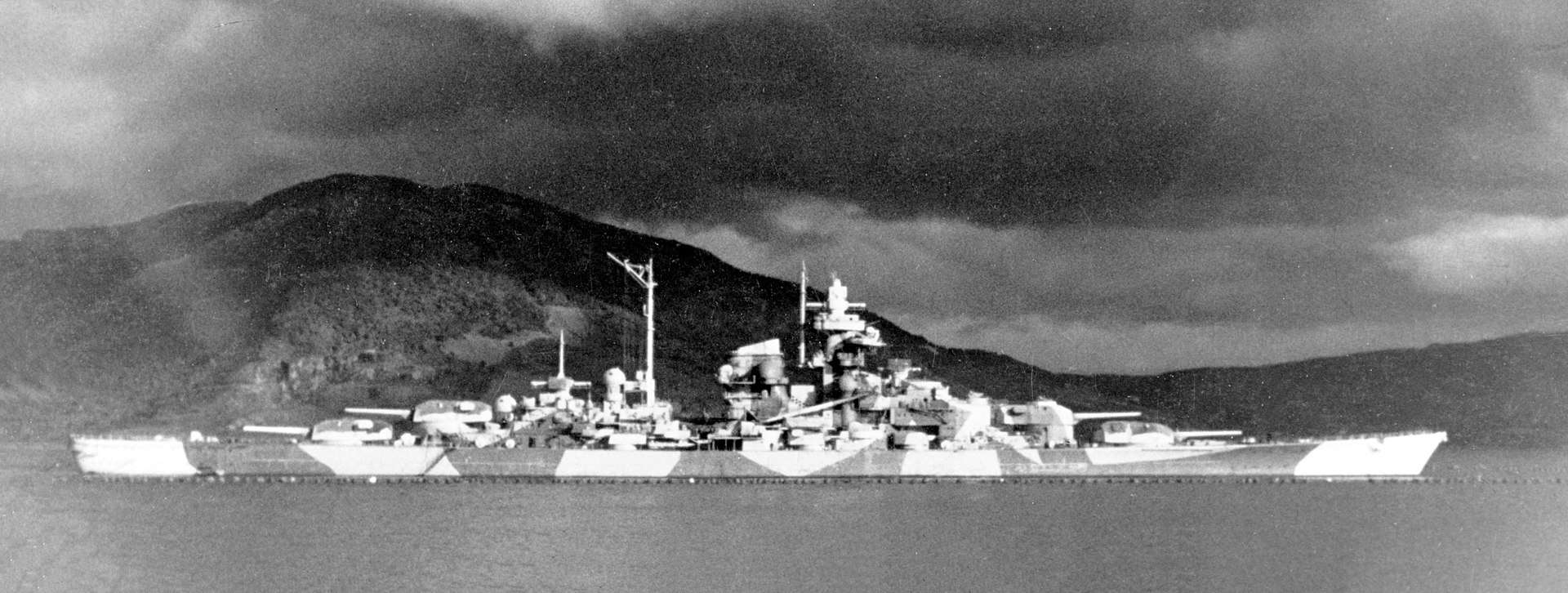
As the sister ship of the infamous Bismarck, the Tirpitz posed a major threat to Allied naval operations in the Atlantic and Arctic oceans.
Construction
The construction of the Tirpitz began in 1936, and it was commissioned into the Kriegsmarine on February 25, 1941.
Designed as a Bismarck-class battleship, the Tirpitz was a marvel of engineering, embodying the German Navy’s pursuit of naval supremacy. Its construction took place at the Kriegsmarinewerft shipyard in Wilhelmshaven, Germany.
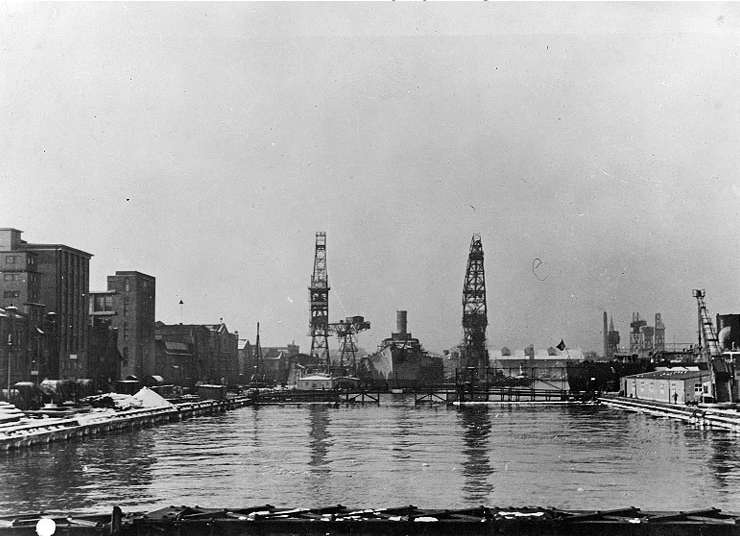
The Tirpitz being fitted out in Wilhelmshaven, Germany, February 2, 1940.
The Tirpitz was an imposing vessel, with a displacement of over 42,000 tons and a length of 251 meters (820 feet). It featured a sleek and formidable profile, designed to maximize speed and stability.
Its massive size made it one of the largest battleships ever constructed, and it required an extensive network of shipyards and infrastructure to support its assembly.
The battleship was equipped with a powerful main battery, consisting of eight 38-centimeter (15-inch) guns housed in four twin turrets. These guns could fire 800-kilogram (1,800-pound) projectiles over a range of approximately 40 kilometers (25 miles), making the Tirpitz a formidable long-range threat.
The ship also featured numerous secondary armaments, including 16 dual-purpose 15-centimeter (5.9-inch) guns and an array of anti-aircraft weaponry, comprising 38 and 105-millimeter guns as well as a significant number of smaller caliber guns.
To protect against enemy fire, the Tirpitz had a formidable armor plating system. Its main belt, composed of high-strength steel, was 360 millimeters (14 inches) thick at its thickest points, providing substantial protection against enemy shells.
The battleship’s deck armor varied in thickness, with the thickest parts measuring up to 220 millimeters (8.7 inches).
Additionally, the ship incorporated an innovative “turtleback” design, which enhanced its resistance to torpedo attacks by deflecting explosions away from vital areas.
 A head on view of the Tirpitz.
A head on view of the Tirpitz.
Propulsion was provided by twelve Wagner high-pressure boilers, which powered three sets of geared steam turbines.
This arrangement produced a total of 163,026 horsepower, allowing the Tirpitz to achieve a top speed of 30 knots (56 kilometers per hour or 35 miles per hour). Its massive fuel storage capacity of 7,772 tons allowed for extended operational ranges.
The crew of the Tirpitz numbered over 2,800 officers and sailors. The ship was equipped with state-of-the-art radar and fire control systems, enhancing its accuracy and situational awareness.
It also had advanced communication systems, including a secure radio network for encrypted communications.
The construction and specifications of the Tirpitz showcased Germany’s technological advancements and the naval ambitions of the Kriegsmarine.
Its size, firepower, and robust armor made it a formidable adversary, instilling fear in the minds of Allied forces and exerting a significant influence on naval warfare strategies during World War II.
Deployment Of The Tirpitz
Upon its commissioning, the Tirpitz was deployed to various locations, with its primary base of operations being the Norwegian fjords.
The presence of the battleship in Norway posed a substantial threat to Allied forces and had significant strategic implications.
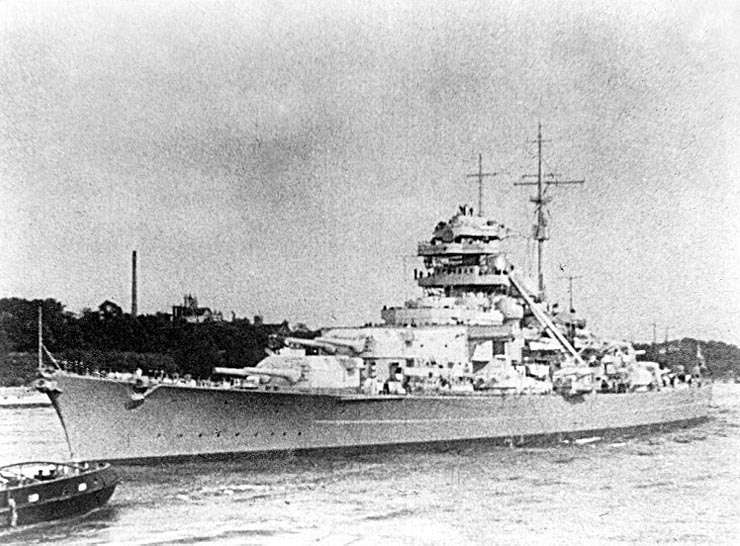 The Tirpitz heading out for sea trials in September 1940.
The Tirpitz heading out for sea trials in September 1940.
Anchored in the remote fjords, the Tirpitz presented a challenging target for Allied forces. Its location provided natural protection, making it difficult for conventional naval forces to engage or neutralize the battleship effectively.
This geographical advantage allowed the Tirpitz to tie down a considerable number of Allied ships, diverting resources away from other critical operations.
One of the primary concerns for the Allies was the disruption of their convoys bound for the Soviet Union. The Tirpitz’s mere presence in the Norwegian waters threatened the crucial Arctic supply lines, which were vital for sustaining the Soviet war effort.
The battleship’s ability to sortie from its base and launch attacks on Allied shipping routes put tremendous strain on these supply lines and endangered the success of critical operations.
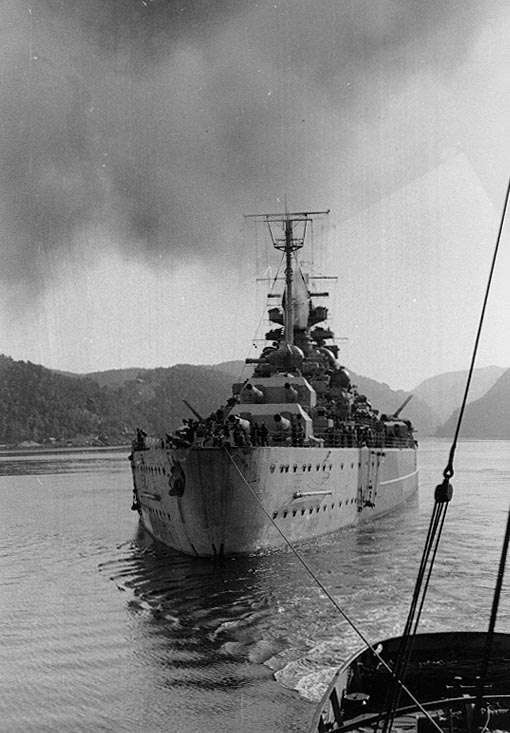 The Battleship Tirpitz in Norwegian waters.
The Battleship Tirpitz in Norwegian waters.
To counter the Tirpitz, the Allied forces had to allocate significant resources and implement various strategies. The Royal Navy, in particular, had to station a considerable number of ships in the vicinity to monitor and contain the battleship.
This included battleships, cruisers, destroyers, and even aircraft carriers. These resources could have been otherwise employed for offensive operations or protection of other vital supply routes.
Furthermore, the presence of the Tirpitz posed a constant threat to the Allied naval forces in the region. The battleship’s firepower and advanced radar systems allowed it to engage and potentially sink individual ships or damage larger formations.
The Royal Navy had to be cautious in its operations, conducting reconnaissance missions and air raids to gather intelligence and assess the battleship’s readiness and activity levels.
The Tirpitz’s threat was not limited to its direct engagement capabilities. Its mere existence had a profound psychological impact on the Allied forces. The battleship represented German naval might, instilling fear and uncertainty among Allied sailors and commanders.
The presence of such a formidable adversary created a sense of vulnerability and forced the Allies to consider multiple scenarios in their operational planning.
Allied Response and Operations
Recognizing the threat posed by the Tirpitz, the Allied forces launched a series of operations aimed at neutralizing or at least limiting the battleship’s effectiveness.
These operations encompassed a range of strategies, including air raids, submarine attacks, and special forces missions.
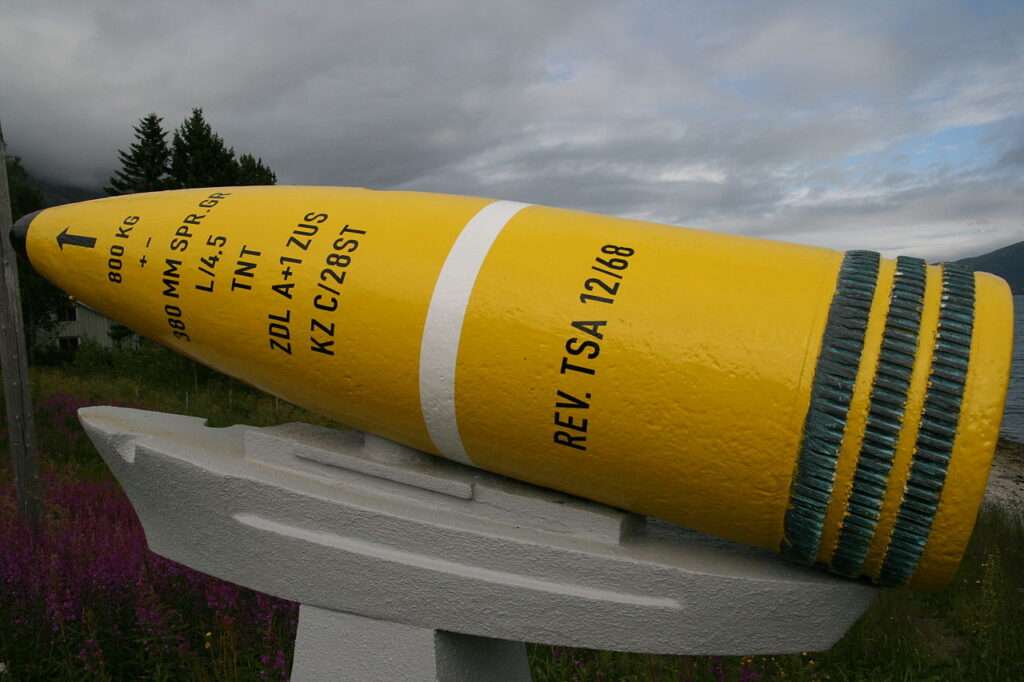 A shell from the Tirpitz found in 1968. Image by Kjetil Ree CC BY-SA 3.0
A shell from the Tirpitz found in 1968. Image by Kjetil Ree CC BY-SA 3.0
One of the earliest attempts to disable the Tirpitz was Operation Title, which took place in March 1942. British bombers targeted the battleship with torpedoes, but due to adverse weather conditions and the effectiveness of German anti-aircraft defenses, the attack failed to inflict significant damage.
Subsequently, the British launched a series of submarine attacks against the Tirpitz. In September 1943, the midget submarines of Operation Source, armed with explosive charges, made a daring attempt to disable the battleship.
While the attack did not sink the Tirpitz, it caused substantial damage and forced the battleship to undergo extensive repairs, rendering it temporarily out of action.
Another noteworthy operation was Operation Tungsten, conducted in April 1944. British carrier-based aircraft targeted the Tirpitz with a concentrated barrage of bombs and torpedoes. Although the battleship sustained heavy damage, it managed to remain afloat.
In the summer of 1944, as part of Operation Mascot, the Royal Air Force (RAF) launched a series of heavy bomber raids against the Tirpitz.
These raids, conducted by Avro Lancaster bombers, were intended to disable the battleship or force it to relocate, thus diverting German resources. While these raids caused damage, they were not able to deliver a decisive blow.
The Tirpitz’ Final Blow
Operation Catechism, conducted on November 12, 1944, marked the culmination of the Allied efforts to sink the Tirpitz.
This daring operation was planned and executed by the Royal Air Force (RAF) with the objective of delivering a decisive blow to the formidable battleship.
The operation involved a massive aerial bombardment of the Tirpitz using specially modified Avro Lancaster bombers armed with “Tallboy” bombs.
These bombs, weighing 5 tons each, were designed to penetrate thick armor and inflict catastrophic damage upon detonation.
 A Tallboy bomb being hoisted into a Lancaster before a raid on a V-weapons site.
A Tallboy bomb being hoisted into a Lancaster before a raid on a V-weapons site.
The Lancaster bombers departed from RAF Lossiemouth in Scotland, embarking on a long and perilous journey to reach their target in the Norwegian fjord of Tromsø, where the Tirpitz was anchored.
The operation was conducted with meticulous planning, taking into account factors such as weather conditions, timing, and enemy defenses.
In the early morning hours of November 12, the Lancaster bombers reached their target. Flying at altitudes of over 6,000 meters (20,000 feet) to evade German anti-aircraft fire, the bombers unleashed their payloads of Tallboy bombs on the Tirpitz.
The bombs plummeted from the skies with tremendous force, guided by skilled bomber crews who aimed to strike the battleship’s vulnerable areas.
Multiple direct hits were scored on the Tirpitz, causing catastrophic damage.
The sheer impact of the Tallboy bombs, combined with their ability to penetrate the ship’s armor, led to internal explosions, flooding, and the rupture of vital compartments.
The battleship listed heavily to one side, ultimately capsizing and sinking into the waters of the fjord.
The destruction of the Tirpitz during Operation Catechism resulted in the loss of over 1,000 German sailors who were on board at the time of the attack.
The sinking of the battleship was a significant blow to the German Navy, removing a formidable threat that had tied down Allied resources and disrupted vital supply lines.
The Wreck Of The Tirpitz
After the sinking of the Tirpitz, the wreck of the battleship remained at the bottom of the fjord in Tromsø, Norway.
Over the years, the wreck became a target for salvagers and souvenir hunters who sought to collect artifacts from the famous battleship.

The wreck of the Tirpitz lying capsized in the Fjord.
In 1948, the decision was made to salvage the remains of the Tirpitz.
The salvage operation, codenamed “Operation Deadlight,” aimed to remove the wreckage of German warships from Norwegian waters.
However, due to the challenging conditions and technical difficulties, the salvaging of the Tirpitz proved to be a daunting task.
In the end, only a small portion of the battleship’s wreckage was successfully salvaged.
The rest of the ship’s remnants were left in the fjord, slowly decaying and becoming a popular site for divers and underwater explorers.
In recent years, efforts have been made to document and preserve the wreck of the Tirpitz as a historical site.
The remains of the battleship have become an underwater attraction, drawing divers and researchers interested in studying the vessel’s architecture and history.
Today, the Tirpitz wreck is considered a war grave and is protected under Norwegian law.
Divers are required to obtain permits to visit the site, and the wreck serves as a reminder of the fierce naval battles of World War II and the enduring legacy of the German Navy.
Conclusion
Operation Catechism represented a remarkable achievement for the RAF and Allied forces. It showcased the effectiveness of the Tallboy earthquake bombs in dealing with heavily fortified naval targets.
The operation also demonstrated the capabilities of the Lancaster bombers and the skill and bravery of the bomber crews who executed the mission under dangerous conditions.
The sinking of the Tirpitz during Operation Catechism had profound implications. It significantly boosted Allied morale, as it proved that even the most powerful battleships could be neutralized.
The removal of the Tirpitz freed up valuable Allied resources that had been dedicated to countering its threat, allowing for increased focus on other strategic operations in the European theater.





